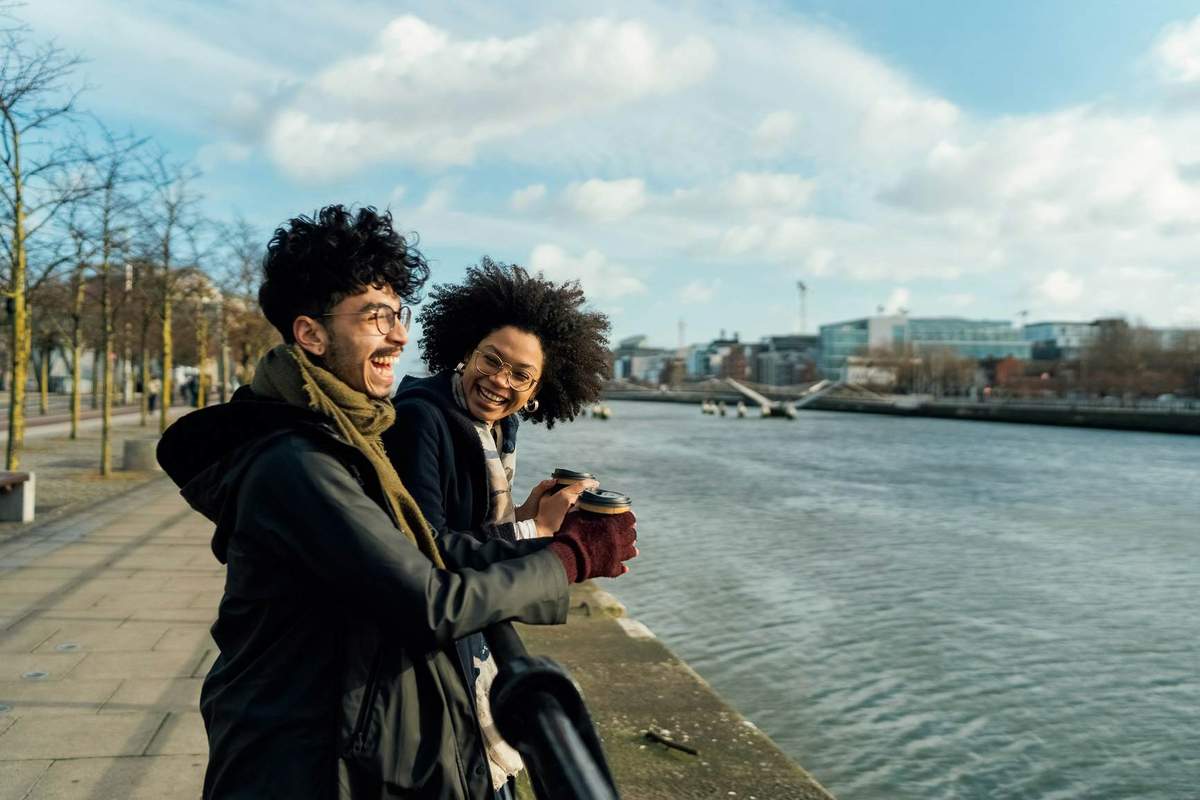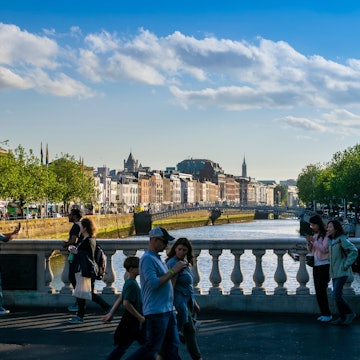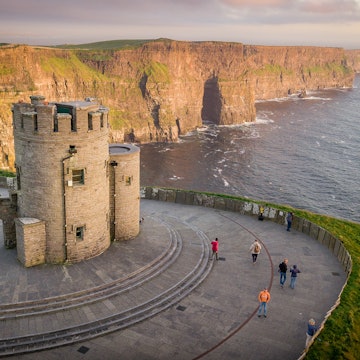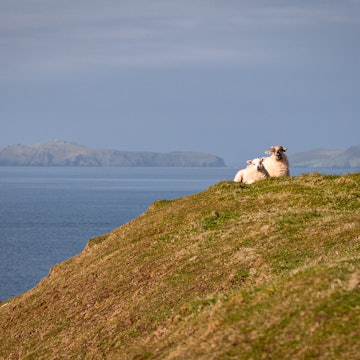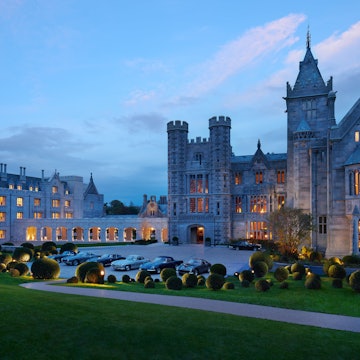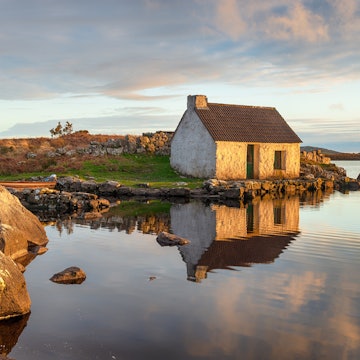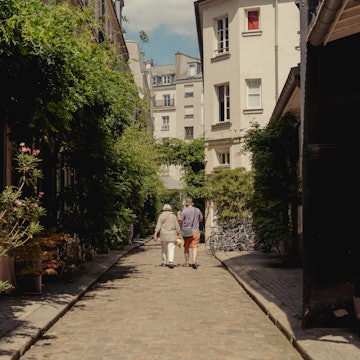

Tipperary
“It’s a long way to Tipperary,” the old marching song goes. Yet the truth is this that bucolic corner of Ireland is surprisingly close: just two hours from Dublin by road or rail, and even closer from Cork and Shannon Airports. Visitors discover not a single town (there is a Tipperary Town, but it’s seen better days though still friendly), but an entire county of green valleys, ancient castles and lakeside villages where the pace of life slows to almost a a trickle.
Tipperary's nickname is Ireland's 'Premier County' as a tribute to its nationalistic leanings in the 1840s. But this is also Golden Vale, Ireland’s most fertile farmland, where dairy herds graze under the Galtee Mountains and cider orchards flourish around the town of Clonmel. To the southwest, the county is anchored by the twin medieval strongholds of Cashel and Cahir, which still dominate the landscape. Beyond them lies the Glen of Aherlow, a lush valley ribboned with hiking trails and crowned by the Christ the King statue gazing out over Tipp’s fields.
Steer north, and the mood shifts with Lough Derg, the great inland lake that straddles the Tipperary–Clare border. Here, you can sip pints at Larkins in Garrykennedy, linger over fresh fish in Terryglass, or watch sailboats bob in Dromineer’s tiny harbor. It’s a perfect reminder that while Tipperary may be synonymous with a song, the real reason to come is the mix of heritage, hospitality and wide-open countryside.
Here’s a full guide to Tipperary to help you before and during your trip.

When should I go to Tipperary?
Tipperary is a year-round destination, and the experience you have depends on when you visit. Spring and summer are best for hiking in the Glen of Aherlow or cycling along Lough Derg’s Blueways. The days are long, the meadows burst into bloom, and there’s a good chance you’ll catch a festival or village fair.
Autumn brings an amber shade to the Golden Vale and fills the county with the scent of apples. This is cider season, when local pubs are at their most inviting. Winter can be quiet, but that’s part of the charm: castles without crowds, and pub firesides where the chat is far warmer than the weather. If you’re a sports fan, keep an eye on the hurling calendar to witness firsthand one of Earth’s fastest, most ancient and most skilled field sports. Summer and autumn matches at Thurles’ Semple Stadium are a thrilling cultural immersion.
How much time should I spend in Tipperary?
You can see the highlights in a couple of days: Cashel, Cahir and the Glen of Aherlow make a neat loop from Dublin, Limerick or Cork. Add a third day and you can swing north for Lough Derg, lingering in lakeside villages and tackling water sports or hikes.
Stay longer, and Tipp rewards you. Clonmel offers cider and riverside walks, Thurles has hurling heritage and Holycross Abbey, and the Galtee Mountains hide upland lakes like Lough Muskry. With four or five days, you can combine history, food and outdoor adventure in one trip.
Is it easy to get in and around Tipperary?
If you have a car, yes. You’ll need your own wheels to get between castles, lakes and mountains, and to reach villages like Garrykennedy or Terryglass, where buses don’t go.
That said, rail links are decent. The Dublin, Cork and Limerick lines stop at Roscrea, Nenagh, Thurles, Cahir and Clonmel. Buses connect Cashel and Lough Derg, though departures are sparse. If you’re cycling, the roads around Lough Derg are especially rewarding, with rolling hills, lake views and plenty of pubs for pit stops.
Top things to do in Tipperary

Behold the Rock of Cashel
If there’s one sight that defines Tipperary, it’s the Rock of Cashel. Rising dramatically from the Golden Vale, this limestone outcrop is crowned with medieval ruins: a round tower, a 13th-century cathedral and Cormac’s Chapel, where faint Romanesque frescoes still survive. The views stretch across patchwork farmland to the Galtee Mountains, a reminder of why Ireland’s kings once chose this as their seat of power.
Nearby, Hore Abbey is a tranquil Cistercian ruin offering a quieter glimpse into monastic life, with lovely views back toward the Rock. It’s a short walk and a peaceful spot for photos or reflection. If you’re feeling fancy, drop by the swish Cashel Palace Hotel for afternoon tea and views that frame the Roc. Or book a meal at Chez Hans, where top cuisine is served in a striking church setting.
Explore Cahir Town and its mighty castle
Cahir Castle is one of Ireland’s largest and best-preserved piles. The formidable medieval fortress rises from an island in the River Suir, right in the heart of town – and has starred in The Tudors and Excalibur. Wander battlements, duck into towers, and it’s not a stretch to visualize skirmishes playing out on the riverbanks below. Then, stroll the riverside path to the whimsical Swiss Cottage, a 19th-century retreat with a thatched roof and ornate interiors.
Six kilometers away, Toureen Peakaun, a seventh-century church ruin with cross slabs, offers a quiet detour into the countryside. Cahir Town itself is compact and incredibly atmospheric, with traditional pubs and shopfronts and a slow, unhurried rhythm.
Hike the Glen of Aherlow, framed by the Galtees
Southwest Tipp’s great outdoors is best experienced in the Glen of Aherlow, a lush valley tucked between the Galtee Mountains and Slievenamuck Hills. Trails range from family-friendly loops to strenuous summit climbs, all watched over by the Christ the King statue. On a clear day, you can see as far as Lough Derg to the north.
Go lakeside in Garrykennedy, Terryglass and Dromineer
The eastern fringe of Lough Derg is made for dawdling. In Garrykennedy, the legendary Larkins serves creamy pints and hearty meals. (Don’t pass up a pint of Whitefriar Blond Ale, a crisp local brew.) Ryan’s, down the lane, offers live trad music in a time-warp atmosphere.
Terryglass mixes holy wells with lively summer nights. Paddy’s Bar has been pouring pints for nearly 200 years. Dromineer’s little harbor is a hub for sailing, and local operators offer kayak or canoe rentals. For the ultimate view, drive up to “The Lookout” near Portroe, where the lake glitters like a sapphire ribbon through emerald valleys.
Discover a passion for hurling and monastic peace at Thurles
Hurling is a religion in Tipperary, and nowhere is it more alive than at Semple Stadium in Thurles, birthplace of the Gaelic Athletic Association (GAA). Here, 45,000 fans roar their team on – and even if you don’t know the rules, the speed and passion of the game will leave you hooked. For a deeper dive into the sport’s history, stop by Hayes Hotel, where the GAA was founded in 1884.
A few miles away, the mood shifts entirely at Holycross Abbey, one of Ireland’s most evocative monastic sites. Founded in the 12th century and lovingly restored, it drew medieval pilgrims from across Europe and still functions as a parish church today. Expect a peaceful counterpoint to the roar of Semple Stadium.

My favorite thing to do in Tipperary
For me, nothing beats an evening by the water at Garrykennedy. The village itself is tiny, and the setting is sublime: an old stone harbor, and the stubby silhouette of Kennedy’s Keep watching over the sailboats and cruisers that moor in the evenings at the pier.
Two bars punch well above their weight. I start with hearty pub fare and a pint of Whitefriar Blond Ale (locally brewed) in Larkins’ beer garden, and may wander down to Ryan’s, a low-ceilinged pub where trad music spills out the door and time seems to stand still.
The charm here is to watch the sky and shoreline darken to an inky blue, hearing fiddles spark to life by an open fire, and chatting with locals who tell you which way the wind is blowing for tomorrow’s lake sailing.
How much money do I need for Tipperary?
Tipperary is generally good value compared with Dublin, Galway or Cork. Accommodation is affordable, pub meals are hearty and most attractions are inexpensive. Cards are widely accepted, though keep some cash for rural pubs and B&Bs.
Pint of Bulmers or Whitefriar Blond Ale: from €6
Entry to Rock of Cashel: €8
Dinner for two in Clonmel: €60
B&B room: from €100 per night
Hostel dorm bed: from €25 per night

What is the Golden Vale?
The Golden Vale is the lush farmland that blankets much of Tipperary, stretching into neighboring Cork and Limerick. It’s Ireland’s breadbasket, famous for rich pastures, top-quality beef and award-winning dairy. You’ll taste it everywhere: farmhouse cheeses in Cashel, creamy pints of stout in village pubs and cider pressed from orchards around Clonmel.
Where did “It’s a Long Way to Tipperary” come from?
The song that made Tipperary famous was written in England in 1912 and became a marching anthem for British soldiers in World War I. (Ironically, the songwriter had never even set foot in Ireland.) Today, it’s more curiosity than chorus, though visitors still find themselves humming the tune as they arrive. The truth is, Tipp no longer feels far away. And once you’ve seen its castles, valleys, and lakes, you might not want to leave at all.
Do I need a car in Tipperary?
Yes, if you want to see the best of the county. While trains serve Thurles, Cahir and Nenagh (for Lough Derg), and buses run to Cashel, without a car you’ll miss much of the magic, such as lakeside villages and mountain valleys. Pack for the outdoors: waterproofs, sturdy shoes and layers for hikes or blustery days on Lough Derg.






